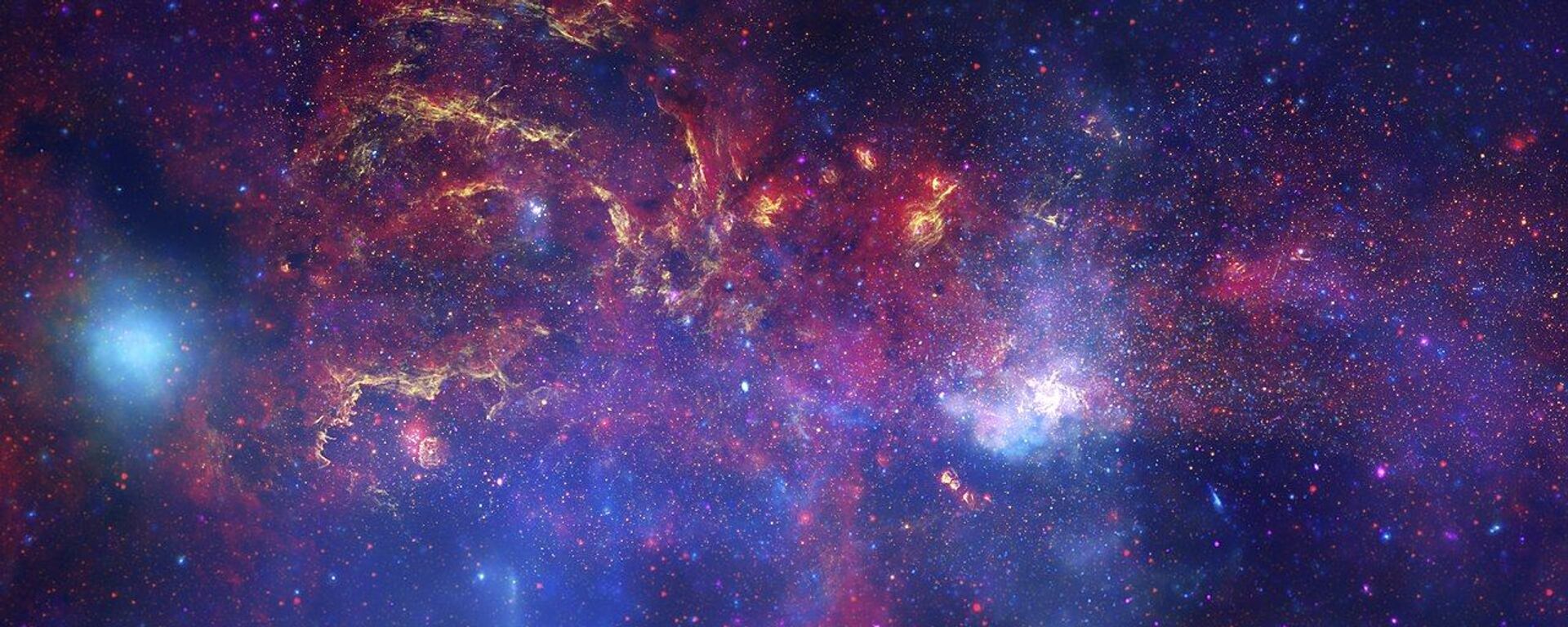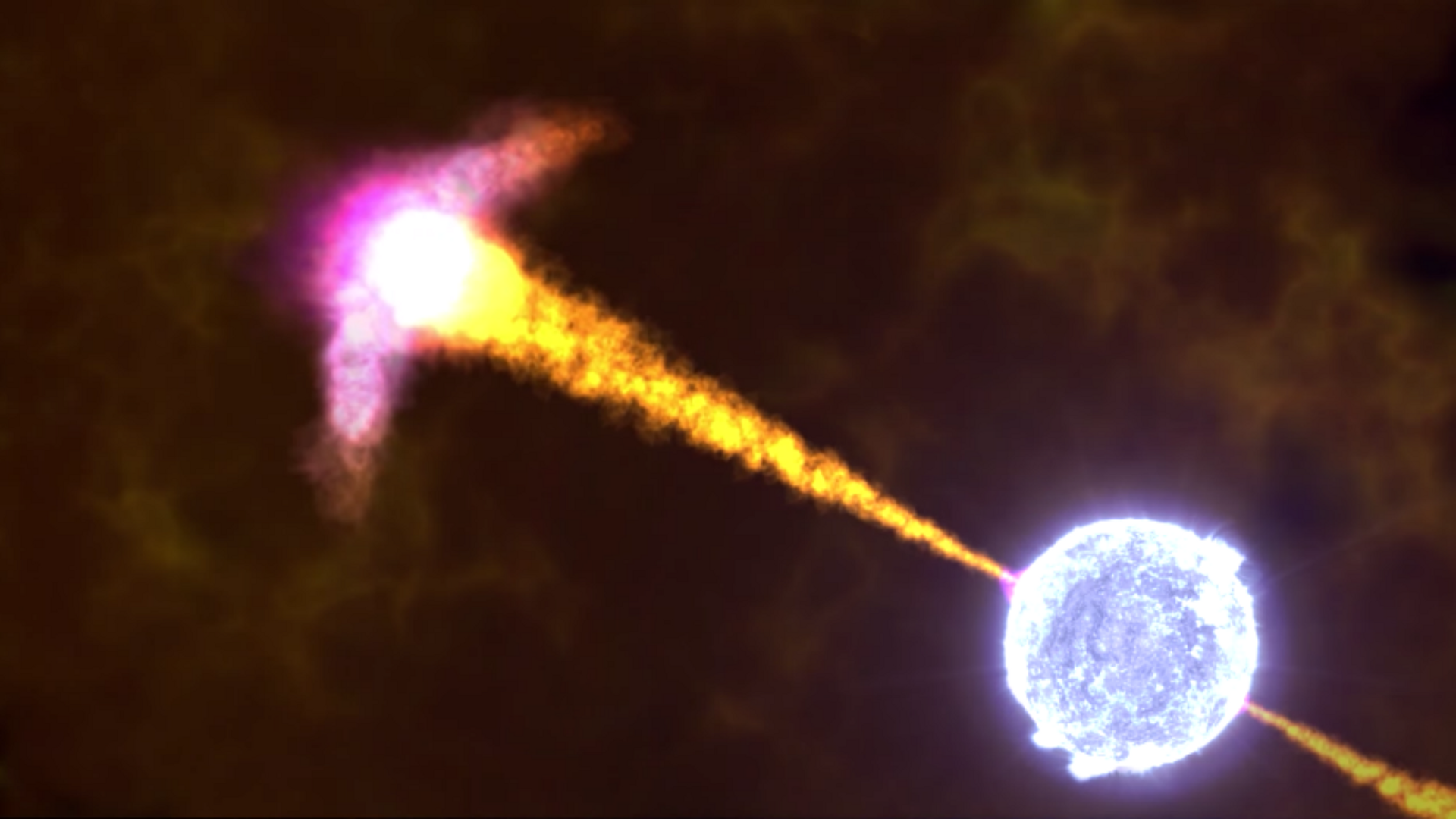https://sputnikglobe.com/20221021/scientists-detect-distant-gamma-ray-burst-from-dawn-of-universe-1102514287.html
Scientists Detect Distant Gamma-Ray Burst From Dawn of Universe
Scientists Detect Distant Gamma-Ray Burst From Dawn of Universe
Sputnik International
The burst's aftermath was observed and studied by a team of astronomers led by Andrea Rossi from INAF in Bologna, after the burst itself was spotted by NASA’s... 21.10.2022, Sputnik International
2022-10-21T18:01+0000
2022-10-21T18:01+0000
2022-10-21T18:01+0000
science & tech
gamma-ray burst
ancient
discovery
study
https://cdn1.img.sputnikglobe.com/img/102540/21/1025402162_2:0:1602:900_1920x0_80_0_0_c13704e1840429bc143bcdfe82b58214.png
An extremely ancient and distant gamma-ray burst that apparently originated in the early days of the universe got spotted by astronomers.The burst in question, designated as GRB210905A, was first detected by NASA’s Neil Gehrels Swift Observatory in September 2021.A team of astronomers led by Andrea Rossi from the National Institute for Astrophysics (INAF) in Bologna then rushed to observe the aftermath of this event using several telescopes, including instruments of the European Southern Observatory (ESO).As for the burst's origin, Rossi’s team postulated that it was likely powered by material being pulled into a black hole, ESO noted.While the origins of such events remain “a bit of a mystery”, ESO’s upcoming Extremely Large Telescope may help deal with this enigma as this instrument is expected to help study properties of such bursts in greater detail, the research organization stated.
https://sputnikglobe.com/20220906/fast-spinning-stars-of-dwarf-galaxy-orbiting-milky-way-could-be-source-of-mystery-gamma-rays-1100439397.html
Sputnik International
feedback@sputniknews.com
+74956456601
MIA „Rossiya Segodnya“
2022
News
en_EN
Sputnik International
feedback@sputniknews.com
+74956456601
MIA „Rossiya Segodnya“
Sputnik International
feedback@sputniknews.com
+74956456601
MIA „Rossiya Segodnya“
science & tech, gamma-ray burst, ancient, discovery, study
science & tech, gamma-ray burst, ancient, discovery, study
Scientists Detect Distant Gamma-Ray Burst From Dawn of Universe
The burst's aftermath was observed and studied by a team of astronomers led by Andrea Rossi from INAF in Bologna, after the burst itself was spotted by NASA’s Neil Gehrels Swift Observatory.
An extremely ancient and distant gamma-ray burst that apparently originated in the early days of the universe got spotted by astronomers.
The burst in question, designated as GRB210905A, was first detected by NASA’s Neil Gehrels Swift Observatory in September 2021.
A team of astronomers led by Andrea Rossi from the National Institute for Astrophysics (INAF) in Bologna then rushed to observe the aftermath of this event using several telescopes, including instruments of the European Southern Observatory (ESO).
According to a statement released by the ESO, the burst apparently originated from a galaxy far, far away, “when the universe was only 6 percent of its current age”, over ten billion years ago.
As for the burst's origin, Rossi’s team postulated that it was likely powered by material being pulled into a black hole, ESO noted.

6 September 2022, 13:34 GMT
While the origins of such events remain “a bit of a mystery”, ESO’s upcoming Extremely Large Telescope may help deal with this enigma as this instrument is expected to help study properties of such bursts in greater detail, the research organization stated.


